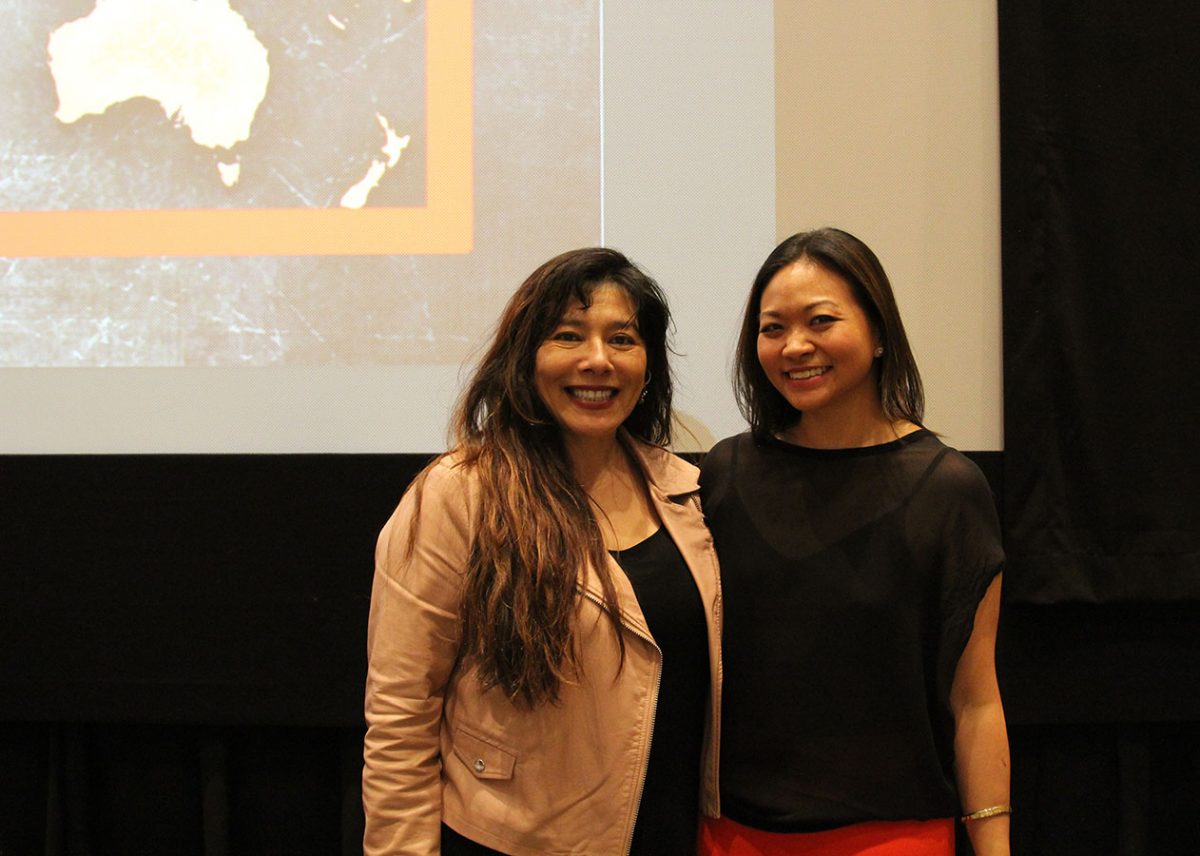Bilateral Anophthalmia: Current Research And Future Treatment Options

Table of Contents
Understanding Bilateral Anophthalmia: Causes and Diagnosis
Bilateral anophthalmia's etiology is complex, often involving a combination of genetic and environmental factors. Early diagnosis is crucial for initiating appropriate interventions and support.
Genetic Factors
Several genetic mutations and syndromes are associated with bilateral anophthalmia, falling under the umbrella of anophthalmia-microphthalmia spectrum disorders. These disorders affect eye development during gestation.
- Specific Genes: Mutations in genes like PAX6, SOX2, and OTX2 have been linked to anophthalmia and microphthalmia (small eyes). Research continues to identify additional genetic contributors.
- Syndromes: Bilateral anophthalmia can be a feature of several syndromes, including Rieger syndrome, Fraser syndrome, and CHARGE syndrome. Genetic testing helps confirm a diagnosis and assess the risk of recurrence in future pregnancies.
- Genetic Counseling: Genetic counseling is essential for families affected by bilateral anophthalmia to understand the inheritance patterns, risks, and available options for future pregnancies. This includes discussing prenatal diagnosis possibilities.
Environmental Factors
While genetic factors play a significant role, environmental influences during pregnancy can also contribute to the development of bilateral anophthalmia.
- Teratogens: Exposure to certain teratogens (substances that cause birth defects) during critical periods of eye development can increase the risk. These include some medications, infections, and environmental toxins.
- Maternal Health: Conditions like uncontrolled diabetes during pregnancy and certain infections can negatively affect fetal eye development.
- Medication Use: Some medications taken during pregnancy are known to interfere with fetal development and can potentially contribute to anophthalmia.
Diagnostic Procedures
Diagnosis of bilateral anophthalmia typically begins with prenatal imaging and continues with postnatal examinations.
- Prenatal Imaging: Ultrasound scans during pregnancy can sometimes detect the absence of eyeballs. More detailed imaging, such as fetal MRI, might be necessary in some cases.
- Postnatal Examinations: Following birth, a thorough ophthalmological examination confirms the diagnosis and assesses the condition of the eye sockets.
Current Treatment Options for Bilateral Anophthalmia
Treatment focuses on improving the individual's quality of life by addressing both functional and cosmetic aspects.
Prosthetic Eyes (Ocular Prostheses)
Prosthetic eyes are custom-made to mimic the appearance of natural eyes.
- Materials: Common materials include acrylic and silicone, chosen for their biocompatibility, durability, and ability to be customized to match the individual's skin tone and eye color.
- Customization: Prosthetic eyes can be meticulously crafted to match the individual's facial features and provide a natural look. This is achieved by taking detailed measurements and photographs.
- Fitting Procedures: The fitting process involves multiple appointments to ensure a comfortable and secure fit. Regular adjustments and replacements may be needed as the individual grows.
Orbital Implants
Orbital implants are used to maintain the shape and volume of the eye socket, preventing sunken appearance and providing a foundation for prosthetic eyes.
- Implant Materials: Various materials, including porous polyethylene, hydroxyapatite, and silicone, are used for orbital implants. The choice depends on individual factors.
- Surgical Techniques: The surgery to place the implant is typically performed by an ophthalmologist or oculoplastic surgeon.
Sensory Integration and Vision Rehabilitation
While vision cannot be restored, therapies help individuals adapt and compensate for the lack of sight.
- Assistive Technology: Canes, screen readers, and other assistive technologies are essential for independent living.
- Occupational Therapy: Occupational therapy helps individuals develop adaptive skills for daily living tasks.
- Sensory Integration: Strategies focus on optimizing the use of other senses to navigate the environment and compensate for the absence of vision.
Emerging Research and Future Treatment Directions for Bilateral Anophthalmia
Exciting advancements in medical research hold promise for improved treatment and potential cures for bilateral anophthalmia.
Stem Cell Therapy
Stem cell research offers hope for regenerating eye tissues.
- Current Research: Scientists are investigating the use of stem cells to create new eye tissues, potentially restoring some visual function.
- Challenges: The complexity of eye development and the need for precise integration of new tissues into existing structures remain significant challenges.
Gene Therapy
Gene therapy aims to correct the genetic defects responsible for bilateral anophthalmia.
- Clinical Trials: While still in early stages, gene therapy trials are exploring ways to modify genes involved in eye development.
- Future Prospects: Successful gene therapy could potentially prevent the development of anophthalmia or even restore some visual function.
3D-Printed Prosthetics
3D printing technology is revolutionizing the creation of customized prosthetic eyes.
- Personalized Prosthetics: 3D printing allows for creating highly personalized prosthetics that fit perfectly and provide improved comfort and aesthetics.
- Benefits: The ability to create complex shapes and intricate details offers significant advantages compared to traditional methods.
Improved Sensory Substitution Devices
Advancements in technology are creating more sophisticated sensory substitution devices.
- Brain-Computer Interfaces: Emerging technologies like brain-computer interfaces aim to provide alternative sensory inputs, directly stimulating the brain to compensate for the lack of vision.
- Emerging Technologies: Ongoing research in this area holds the potential for more effective and intuitive sensory substitution.
Conclusion
Bilateral anophthalmia presents significant challenges, but ongoing research offers hope for the future. Understanding the underlying causes, current treatment options, and promising avenues of research is crucial. The development of stem cell therapies, gene therapies, advanced prosthetics, and sophisticated sensory substitution devices holds the potential to revolutionize treatment and improve the lives of individuals with bilateral anophthalmia. Further research into bilateral anophthalmia is crucial to improve the lives of affected individuals. Understanding the latest advancements and supporting ongoing research efforts can lead to significant breakthroughs in treatment options for bilateral anophthalmia and improve the quality of life for those living with this rare condition. Learn more about bilateral anophthalmia support groups and research initiatives today.

Featured Posts
-
 The Most Emotional Rocky Film Stallones Choice And Why It Matters
May 12, 2025
The Most Emotional Rocky Film Stallones Choice And Why It Matters
May 12, 2025 -
 Adele Lim To Develop Crazy Rich Asians Tv Show For Hbo Max
May 12, 2025
Adele Lim To Develop Crazy Rich Asians Tv Show For Hbo Max
May 12, 2025 -
 Santorini Earthquake Activity Decreasing Tremors Uncertain Future
May 12, 2025
Santorini Earthquake Activity Decreasing Tremors Uncertain Future
May 12, 2025 -
 Porsche 911 Gt 3 Rs 4 0 Graham Rahal Showcases Exceptional Performance
May 12, 2025
Porsche 911 Gt 3 Rs 4 0 Graham Rahal Showcases Exceptional Performance
May 12, 2025 -
 Celtics Magic Performance Secures Division Title
May 12, 2025
Celtics Magic Performance Secures Division Title
May 12, 2025
Latest Posts
-
 Trump Calls For Ukraine Russia Talks Without Precondition Of Ceasefire
May 12, 2025
Trump Calls For Ukraine Russia Talks Without Precondition Of Ceasefire
May 12, 2025 -
 January 6th Falsehoods Trump Supporter Ray Epps Files Defamation Lawsuit Against Fox News
May 12, 2025
January 6th Falsehoods Trump Supporter Ray Epps Files Defamation Lawsuit Against Fox News
May 12, 2025 -
 Blue Origins Rocket Launch Abruptly Halted By Technical Glitch
May 12, 2025
Blue Origins Rocket Launch Abruptly Halted By Technical Glitch
May 12, 2025 -
 Hamas Release Of American Hostage A Gaza Update
May 12, 2025
Hamas Release Of American Hostage A Gaza Update
May 12, 2025 -
 Secret Service Investigation Complete Cocaine Found At White House
May 12, 2025
Secret Service Investigation Complete Cocaine Found At White House
May 12, 2025
